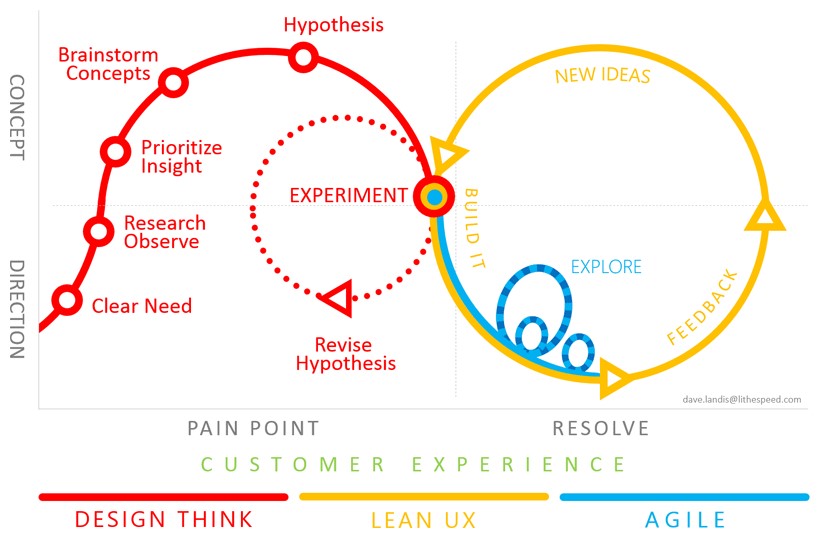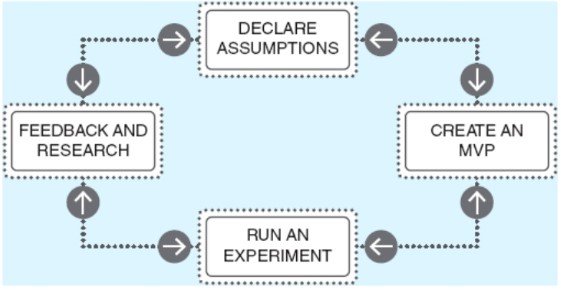
Lean UX
In my professional experience I have found many situations where teams and/or organizations often say that they don’t have time for doing user research or user tests for their digital products. Well, I can guarantee that this also means that they will have to put more time aside for fixing the product once the users or the market doesn’t like what has been delivered.
Nowadays, big companies such as Google, Apple or Uber to name a few, have been including the Lean UX methodology in their creation of digital products because of the many benefits they have found.
So, what is Lean UX?
The word Lean comes from the Lean Manufacturing approach that was started in Toyota Motors with the objective of improving the car production process. One of the characteristics of this approach was to include the user opinions or feedback in order to improve customer satisfaction. The results was a better product, reduced waste and increase in customer loyalty.
Lean UX methodology is the result of combining Lean and User experience (UX) to the design and development of digital products. It is a methodology on how to build better products moving away from heavily documented handoffs to promoting collaboration and learning with an outcome-based results.
Some of the benefits of applying Lean UX are:
- Reduce the risk of delivering the wrong products or features
- Reduce the waste that has little value to the customer which also saves money
- Improves the overall customer experience
- Reduced time to market
The foundation of Lean UX

Lean UX is based on three foundations: 1) Design Thinking: a method that is in the intersection of the need of the customer, what is feasible from technology’s perspective and what is also viable in terms of business strategy 2) Agile Software Development: incremental an iterative process that delivers value to the customer in short cycles 3) Lean Startup: creation of rapid prototypes in which feedback loops of build-measure-learn takes place
And comes with the following principles according to the Lean UX book:
- Cross-Functional teams
- Small, dedicated, collocated
- Progress = Outcomes, Not output
- Problem-Focused teams
- Removing Waste
- Small Batch Size
- Continuous Discovery
- GOOB (getting out of the building): the New User-Centricity
- Shared understanding
- Anti-pattern: Rockstar, Gurus and Ninjas
- Externalizing your work
- Making over analysis
- Learning over growth
- Permission to fail
- Getting out of the Deliverables business
The process

Lean UX is based on a Build-Measure-Learn iterative process and is implemented collaboratively in groups.
First we need to declare assumptions moving away from creating deliverables or outputs (“develop a shopping list”) to creating outcomes (“increase the number of cross-selling for our customers”) in order to search for the best solutions to the problem at hand.
Once the assumptions are declared, we will create an MVP (Minimum Viable Product) in order to help testing our assumptions. The “minimum” word means that we should minimize the work we put in order to prove the ideas so we can reduce waste and complexity.
Next we will run an experiment by using tests and prototypes that will assess its validity and efficacy of the hypothesis.
Finally, together with the customers, we will gather feedback and perform research collaboratively. The information we gather will be very useful to use when building the product.
This process is cycle and can be easily synchronized with agile frameworks such as Scrum in order to build a more efficient process.
Conclusion
Lean UX not only eliminates any waste that has little value to the customer but it is continuously learning and improving the process and the products in order to create products that are easy to use, attractive and successful for our customers.